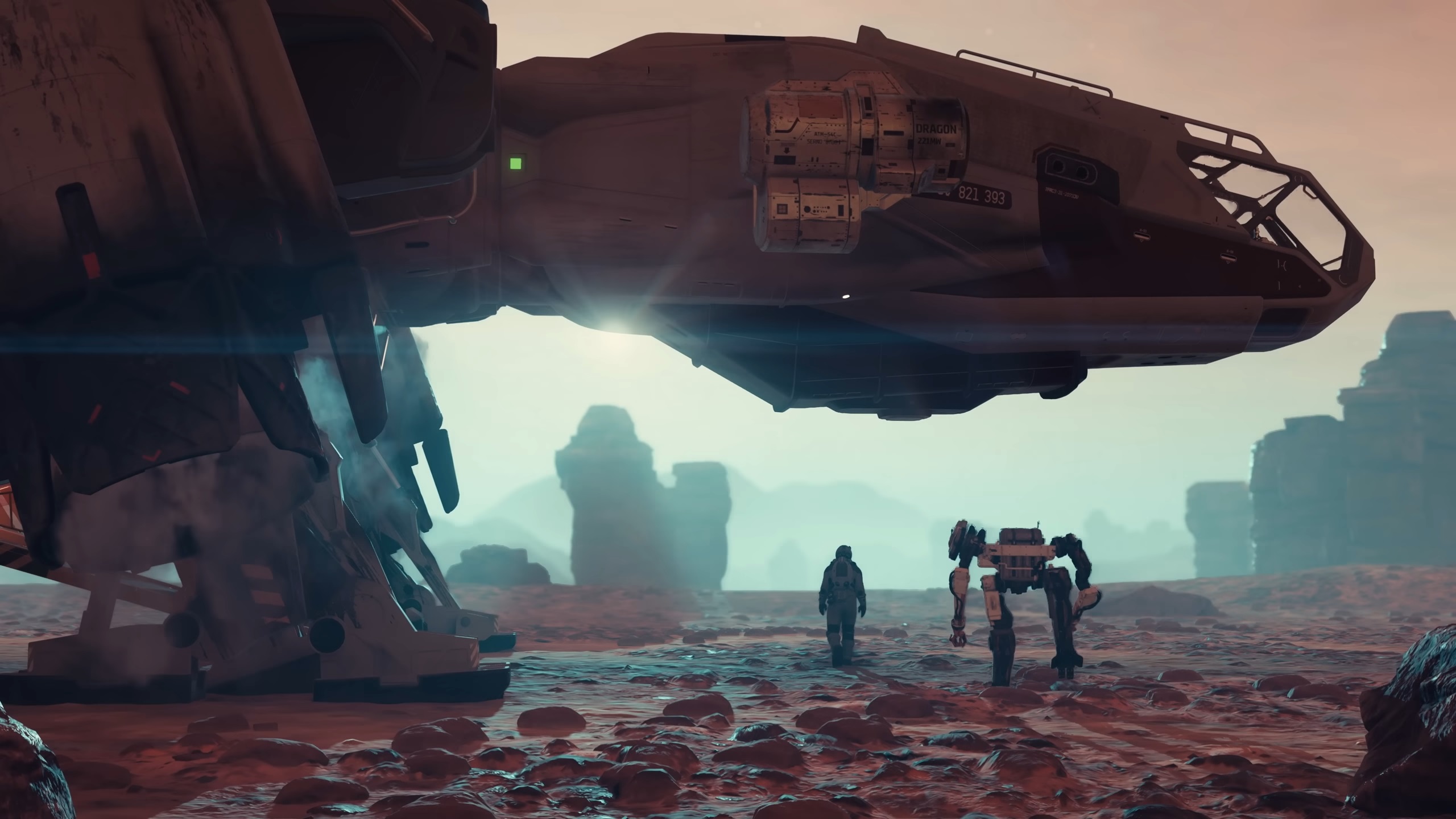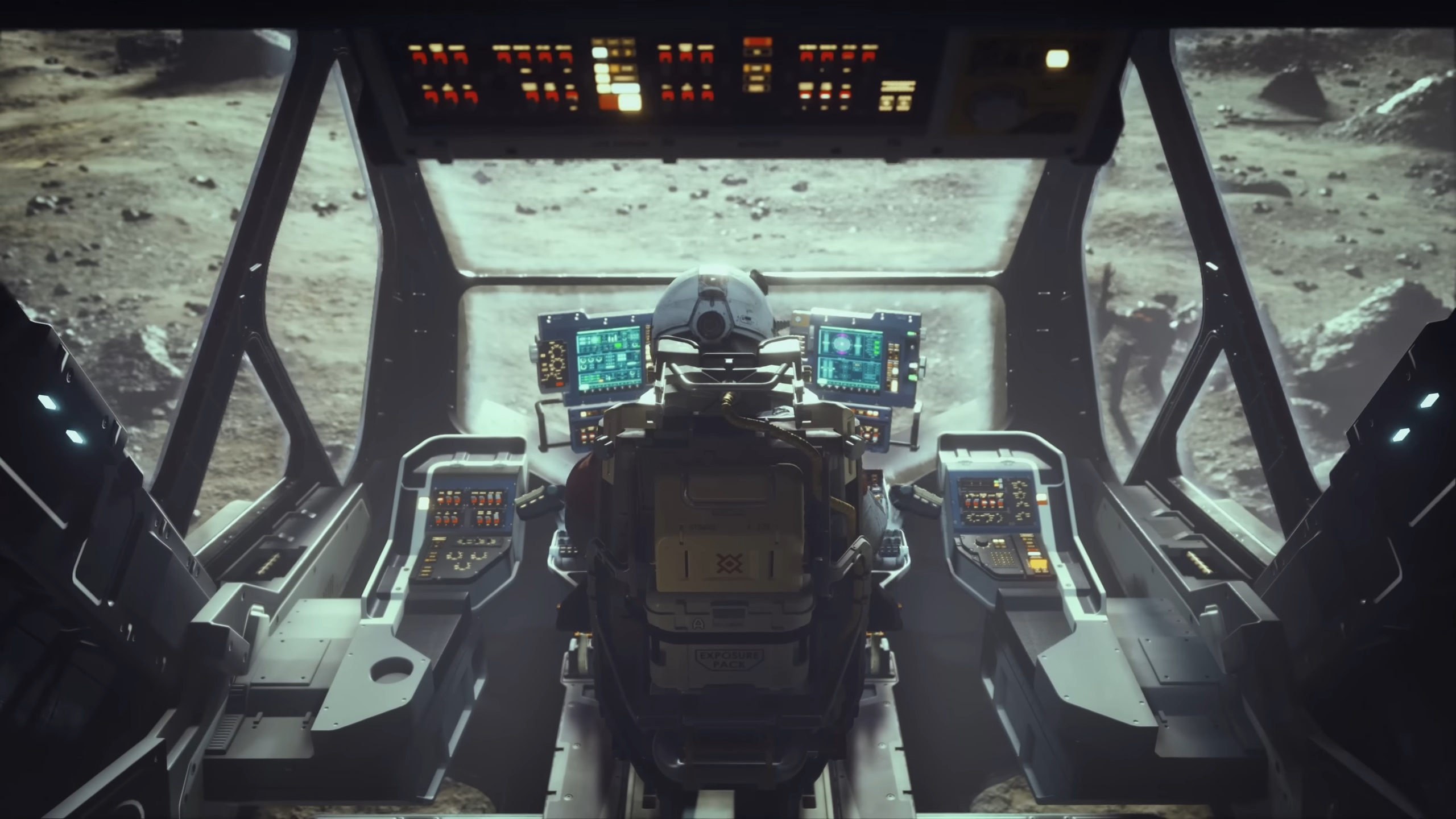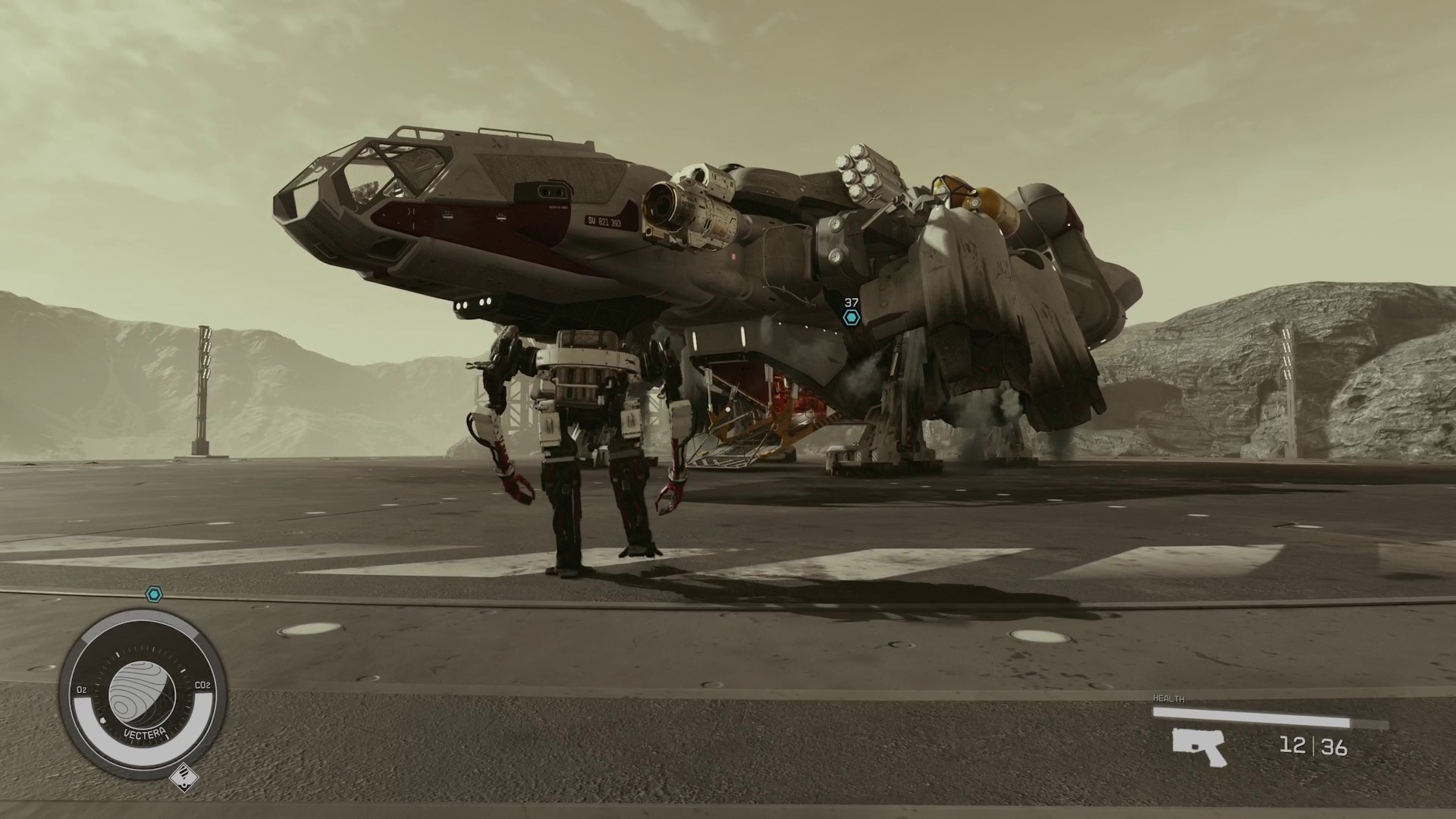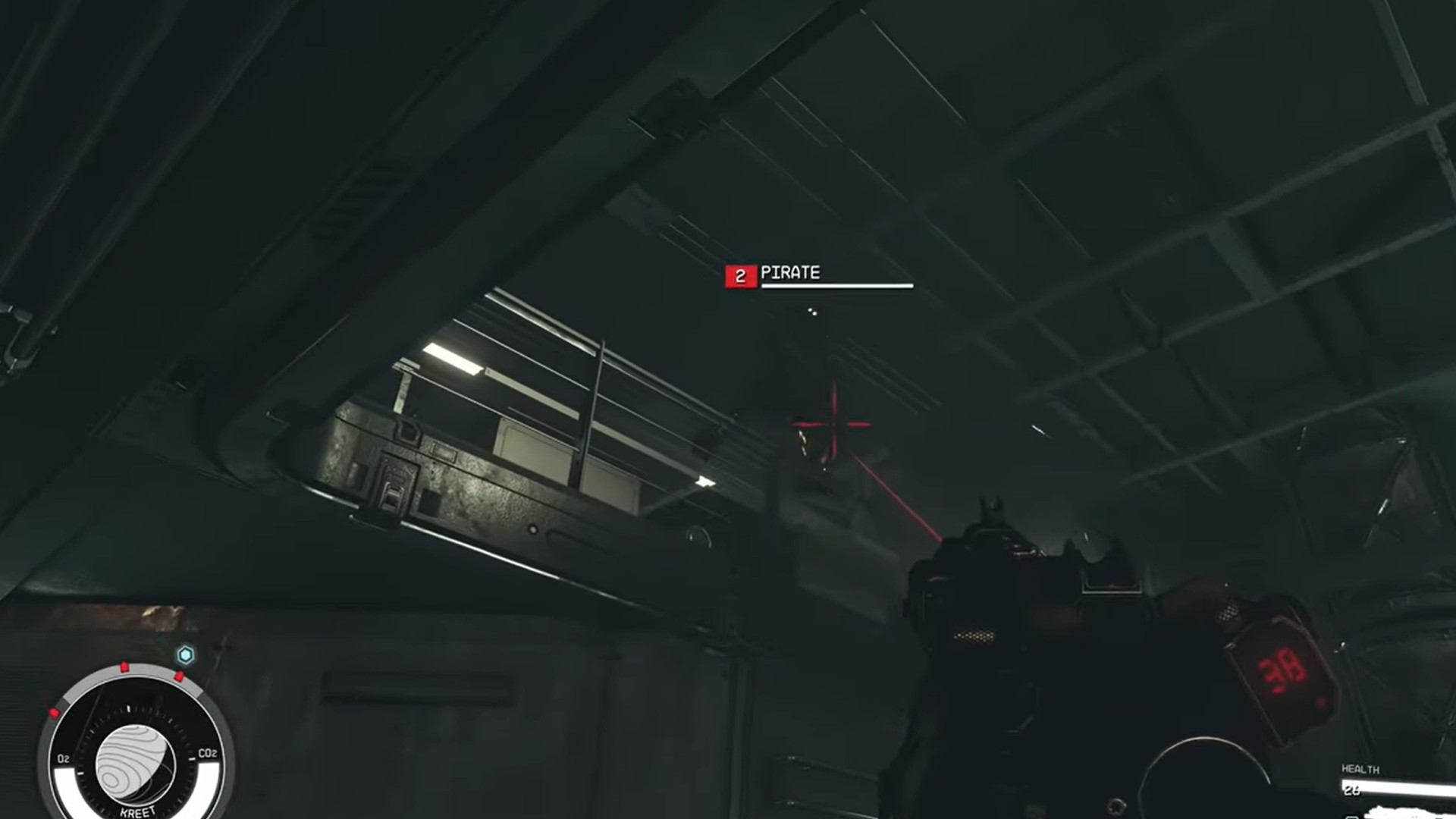Starfield thrives in its quietest moments because few studios do implicit dread like Bethesda
Opinion | Raiding seemingly abandoned outposts is one of the most entertaining side ventures in Starfield

Starfield is a melting pot of ideas. As Bethesda's first new game series in a quarter of a century, it pulls from everything the developer has worked on since – chiefly the studio's esteemed Fallout titles, and the enduring high fantasy fare of The Elder Scrolls series. Against Starfield's sci-fi, space-flung framework, there's probably more of Fallout's steampunk-meets-retro futurism mirrored in its minute-to-minute movements, but the likes of Skyrim – it now having sold upwards of 60 million copies – casts a long shadow over the game our own Leon Hurley described as "the best thing Bethesda's done since Oblivion".
Our Starfield review naturally makes a broad-strokes argument for why this is the case, but it's been on a far more granular level that the sci-fi RPG has impressed me most so far. Sure, the game's meticulous ship-building is cool. Yes, its dogfighting can be thrilling. It definitely could be argued Starfield's combat is Bethesda's best, because we finally said goodbye to VATS. But it's the subtle familiarities that have swept me off my feet – those short but striking situations that fill me with joy and alarm all at once; that look and sound spectacular as per modern standards, but that take me right back to the classic Bethesda games of old.
Few studios do implicit dread like this one, and every successful outpost infiltration is worth its weight in credits.
Into the breach


Vasco calling me "Captain Josh" is my favorite thing about Starfield
That feeling is first felt around 20 or so minutes into the main Starfield questline, shortly after touching down on the foreign planet of Kreet. After a short meander across a rocky surface rich in silver deposits – that sees you scanning and/or fighting some of the local wildlife en route – you enter a research lab that's also the supposed current location of the Crimson Fleet Captain. They're the reason you're here, and while you'll ultimately reach the roof of the outpost, gun down loads of baddies, before chasing and executing said faction leader, the build up to this showdown far outweighs the outcome in style and substance.
As I approached the research facility, for example, Starfield's ambient orchestral scene-setting score kicked in. Just as the wind instruments were getting into the swing of things, though, I entered the building and killed the music stone dead. Inside, the steady hum of industrial fans permeated the space – with its dim lighting, narrow corridors and metal catwalks posing a stark contrast to the vast expanse outside. With robotic companion Vasco in tow, I spent a few minutes routing around the corners of the ground floor, gathering handy supplies and useless junk indiscriminately.
I then eased up the stairs into what looked like a control deck, took another look around, before climbing another floor to a room lined with terminals, generators and seemingly abandoned storage containers. Whoever was here last had left the place in a mess, I thought to myself, and, perhaps thinking back to Fallout's post-apocalyptic locales, I began to assume this outpost too was derelict. I spent a few more minutes casing the place, before heading through another mechanical door into a room within which I swore I heard footsteps. I paused, held my breath, and listened. But all I heard was the omnipresent fans pumping oxygen into the building.

"It was safe to relax. Or so I thought. I stood upright, inadvertently blew my own cover, and saw a stream of bullets zip past my head in all directions."
This room more resembled a living space, but I remained unconvinced we had company. In a crouched position, I edged along the side of a long breakfast bar-like table, peered around the corner and saw… nothing. And it was safe to relax.
Sign up to the GamesRadar+ Newsletter
Weekly digests, tales from the communities you love, and more
Or so I thought. I stood upright, inadvertently blew my own cover, and saw a stream of bullets zip past my head in all directions. Then there was shouting, the wail of distressed radio coms, and the forceful sound of boots hitting the metal floor and bullet shells pinging all around. Firing blindly in-game and screaming expletives in real life, I hammered my control pad every which way until I settled into a rhythm of action. I counted one, then two, then three, four, maybe five enemies on this floor, with a few more raining down shots from the gantry. Vasco flanked two of the offending space pirates to my right, which let me rush the others with a quick flurry of headshots.
The bodies had barely hit the floor as I clambered up the stairs to the gantry, gunning for the remaining foes guarding their captain. Once they were down, Vasco and I headed to the roof, took out some more faceless foes, chased down and killed our target. Mission accomplished, albeit in the bloodiest blur of gratuitous violence.
Which is Bethesda games in a nutshell, right? Quiet, contemplative lulls followed by explosive backs-to-the-wall, carnage-fueled highs that either wind up with you bleeding out while watching a load screen rewind time by a few minutes; or you triumphantly standing atop a carpet of dead NPCs. But given the mass scale of Starfield, wherein you can spend literal hours messing about in space or exploring cities or building out your ship like virtual Lego, these moments feel more special than ever. Moreover, the self-guided expositional moments that set up these set-pieces feel more tense, more engaging, and more gut-wrenching – which, to me, is the best of Bethesda.
All of which brings us full circle. Starfield is a melting pot of ideas – one which will pull players towards whichever facets of the game they enjoy most. For me, that's living uncomfortably close to disaster, plundering seemingly abandoned outposts, and nearly shitting myself when I realise I'm not alone. War never changes, so goes Fallout's cliched catchphrase. And, clearly, neither does how I approach Bethesda's dread-filled exploratory missions.
Lose your free time to some of the best RPGs on the market right now

Joe Donnelly is a sports editor from Glasgow and former features editor at GamesRadar+. A mental health advocate, Joe has written about video games and mental health for The Guardian, New Statesman, VICE, PC Gamer and many more, and believes the interactive nature of video games makes them uniquely placed to educate and inform. His book Checkpoint considers the complex intersections of video games and mental health, and was shortlisted for Scotland's National Book of the Year for non-fiction in 2021. As familiar with the streets of Los Santos as he is the west of Scotland, Joe can often be found living his best and worst lives in GTA Online and its PC role-playing scene.


